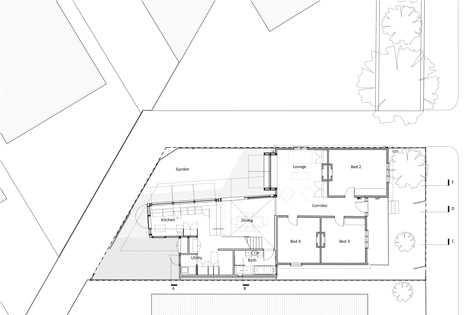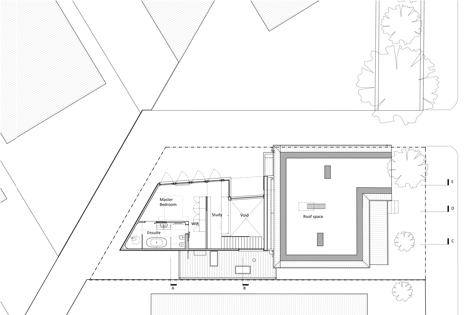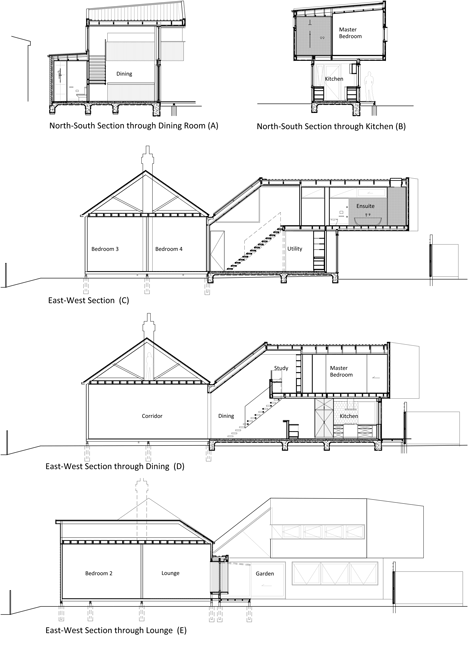Triangular void connects a two-storey timber extension to a Melbourne bungalow
A sloped section of roof joins this timber-clad extension by Melbourne studio Julie Firkin Architects to the adjacent weatherboard house (+ slideshow).
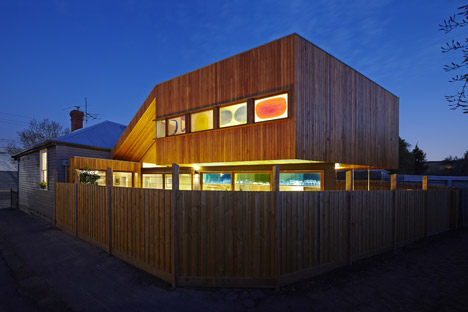
Fenwick Street House was designed by Julie Firkin Architects to extend the existing house for a family of five in Melbourne's Clifton Hill neighbourhood. The new two-storey addition occupies an irregularly shaped plot to the rear of the property and contains a kitchen, dining area and master bedroom suite.
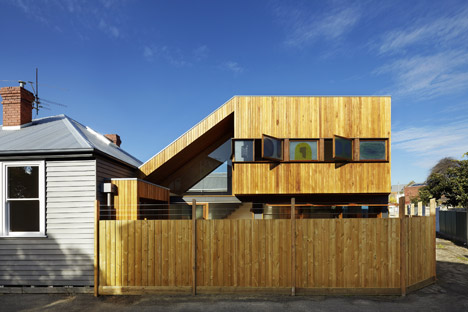
An arrangement of angular and overlapping volumes accommodate a series of interconnected rooms, which offer different-shaped spaces within a limited footprint.
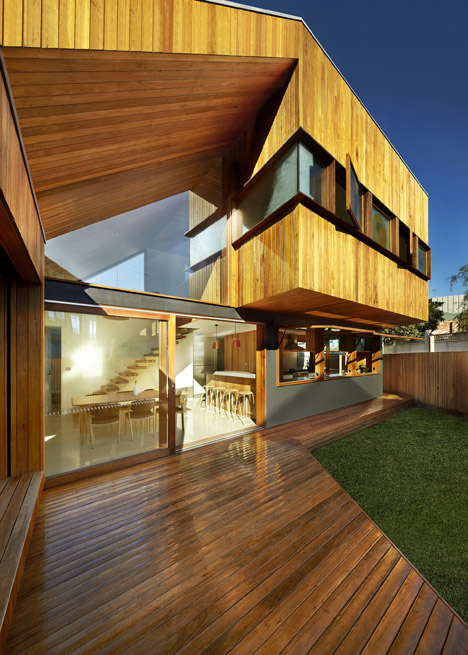
"The clients wanted a warm, familial atmosphere, expressed through natural materials and a variety of spaces from generous to small and cosy," Firkin told Dezeen.
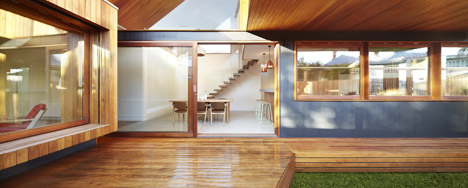
The use of natural materials begins with the wooden cladding for exterior, where unpainted Australian silvertop ash applied in vertical strips distinguishes the new structure from the old building.
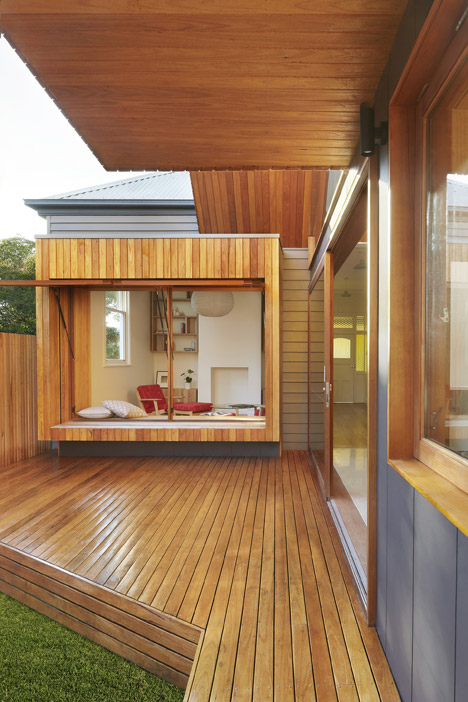
"The cladding is sympathetic with the original weatherboards but the shiplap profile has a more contemporary aesthetic," Firkin pointed out.
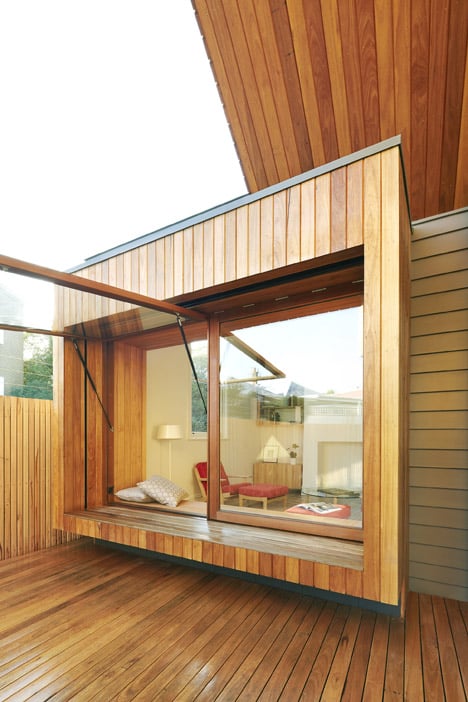
The extension ascends diagonally from the rear of the original house at an angle that mirrors the pitch of its hipped roof. This is designed to accentuate the transition from the single-storey structure to the two-storey addition.
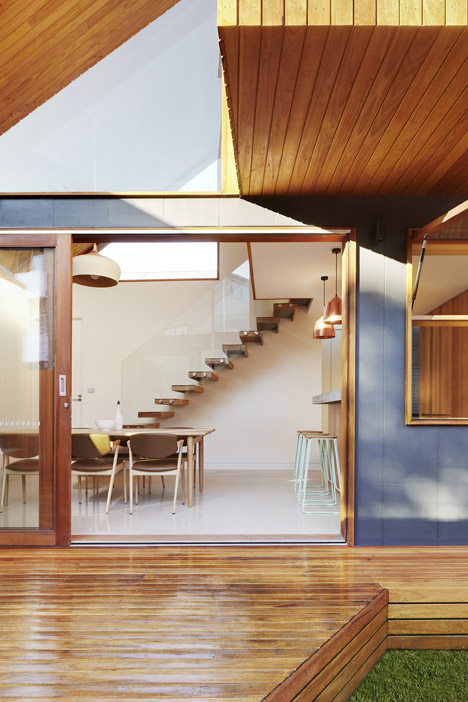
The sloping roofline follows the angle of the staircase below and creates a dining area that is entirely glazed on one side and features an angular clerestory window on the other.
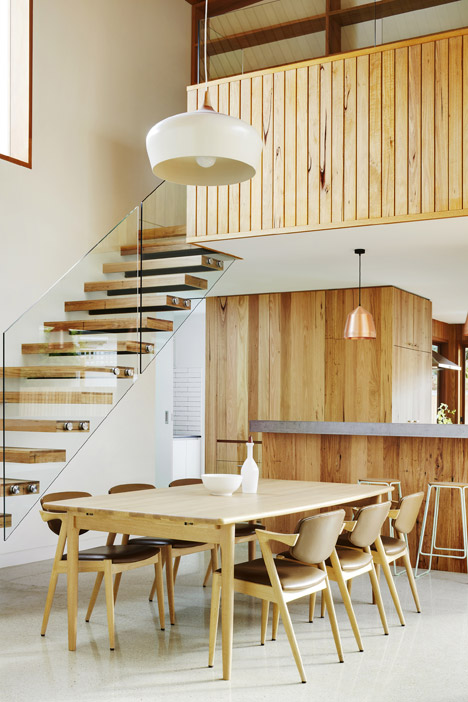
On the upper storey, the area containing the master bedroom cantilevers towards the garden and provides shade to the ground floor living areas during the summer.
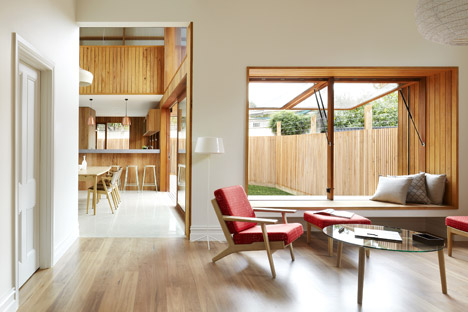
Coloured filters applied to the windows on this level feature abstract shapes designed by the artist Jethro Harcourt, who is also the client's brother. The decorations prevent the bedroom from overlooking the gardens of neighbouring properties.
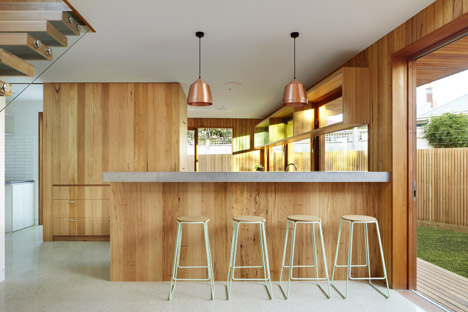
Wood is the predominant material used for the interior, including the treads of an open-riser staircase – flanked by a glass balustrade to minimise its visual presence in the dining area.
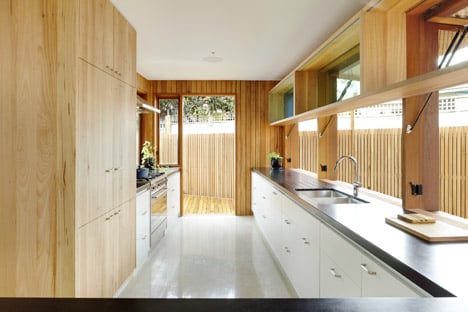
White surfaces and pale concrete complement the wood and form a subtle palette that is punctuated by coloured details, including the window treatments in the kitchen and bedroom.
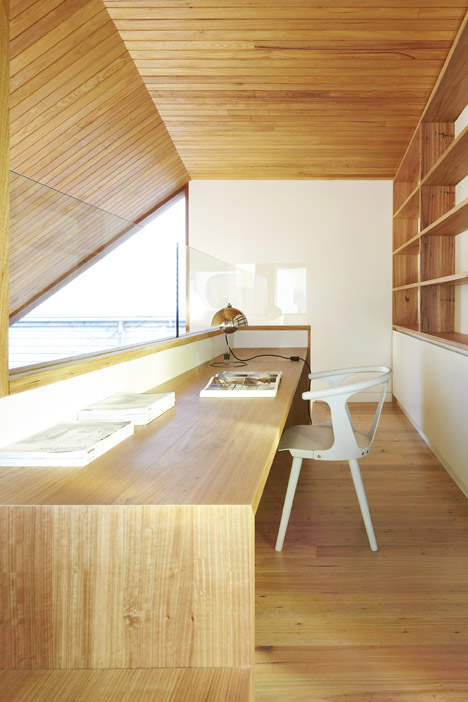
A lounge area in the existing house has been renovated by adding a new window bench, which projects out towards the garden and is fronted by windows that swing open upwards.
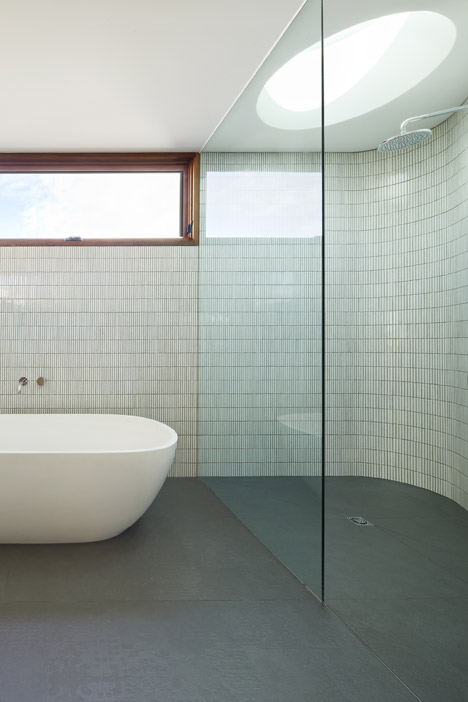
Similar windows lining the kitchen can be raised to enhance the connection between this space and the garden, while a sliding glass door from the dining room opens onto a large wooden deck.
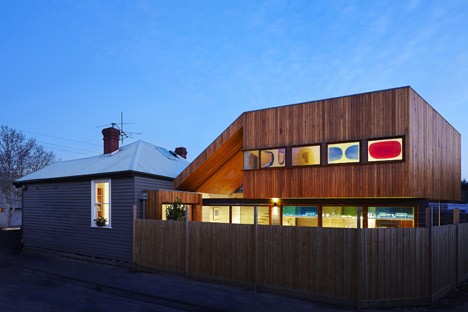
Photography is by Christine Francis.
